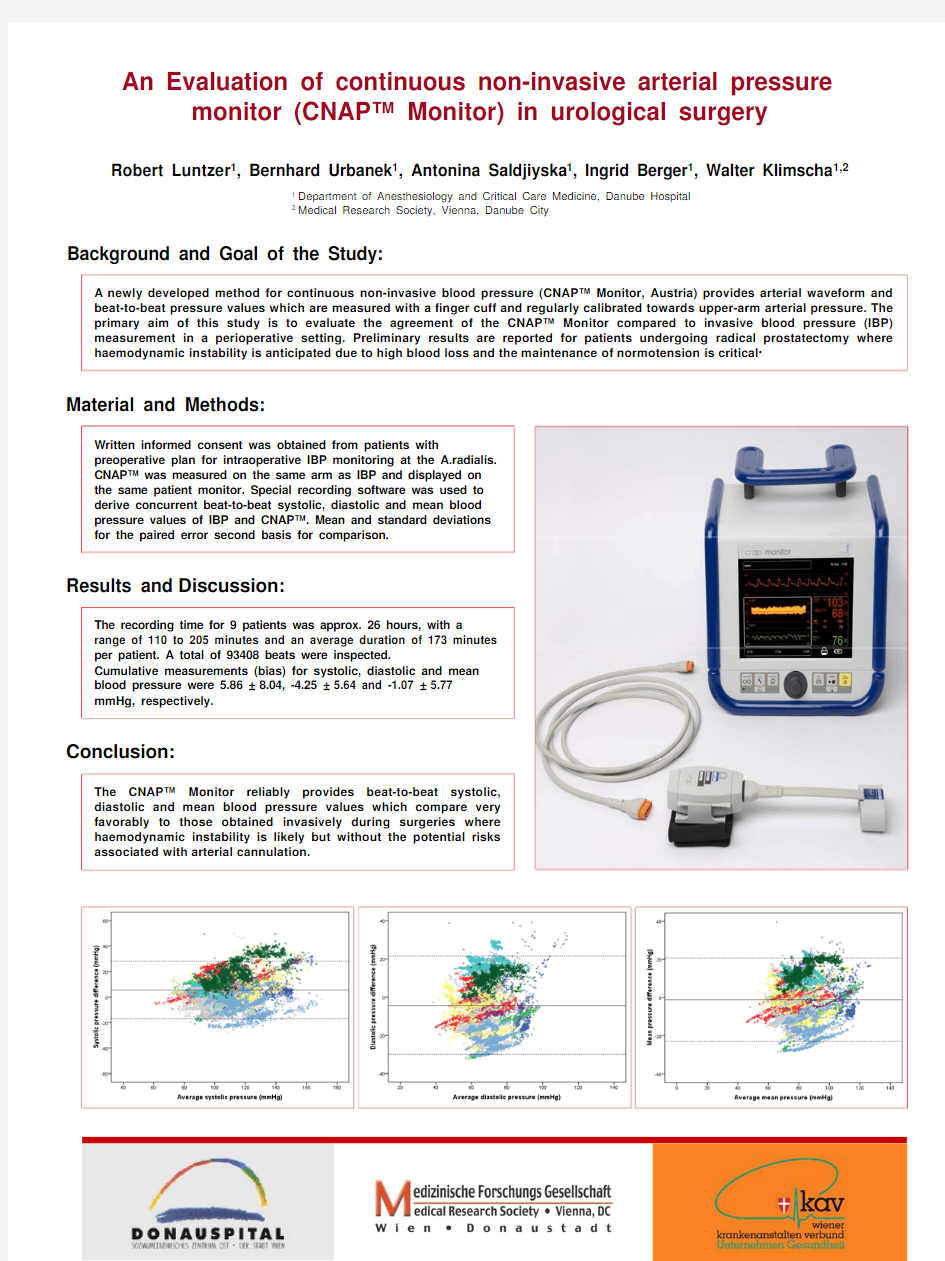
An Evaluation of continuous non-invasive arterial pressure monitor (CNAP? Monitor) in urological surgery Robert Luntzer 1
, Bernhard Urbanek 1
, Antonina Saldjiyska
1
, Ingrid Berger
1
, Walter Klimscha 1,2
Written informed consent was obtained from patients with
preoperative plan for intraoperative IBP monitoring at the A.radialis.
CNAP? was measured on the same arm as IBP and displayed on
the same patient monitor. Special recording software was used to derive concurrent beat-to-beat systolic, diastolic and mean blood pressure values of IBP and CNAP?. Mean and standard deviations
for the paired error second basis for comparison.
Material and Methods:
The recording time for 9 patients was approx. 26 hours, with a
range of 110 to 205 minutes and an average duration of 173 minutes
per patient. A total of 93408 beats were inspected.
Cumulative measurements (bias) for systolic, diastolic and mean
blood pressure were 5.86 ±8.04, -4.25 ±5.64 and -1.07 ±5.77
mmHg, respectively.
Results and Discussion:
The CNAP?Monitor reliably provides beat-to-beat systolic,
diastolic and mean blood pressure values which compare very
favorably to those obtained invasively during surgeries where
haemodynamic instability is likely but without the potential risks
associated with arterial cannulation.Conclusion:
A newly developed method for continuous non-invasive blood pressure (CNAP?Monitor,Austria)provides arterial waveform and beat-to-beat pressure values which are measured with a finger cuff and regularly calibrated towards upper-arm arterial pressure.The primary aim of this study is to evaluate the agreement of the CNAP?Monitor compared to invasive blood pressure (IBP)measurement in a perioperative setting.Preliminary results are reported for patients undergoing radical prostatectomy where haemodynamic instability is anticipated due to high blood loss and the maintenance of normotension is critical .
Background and Goal of the Study:
1 Department of Anesthesiology and Critical Care Medicine, Danube Hospital
2 Medical Research Society, Vienna, Danube City